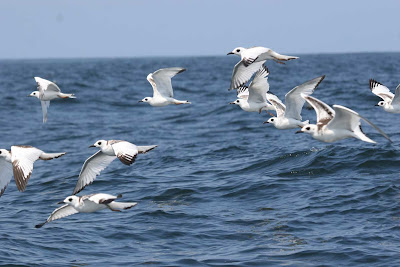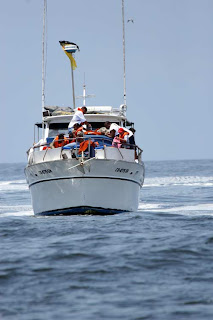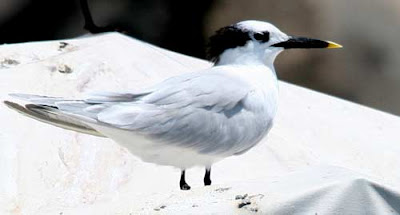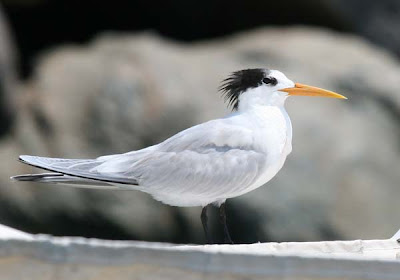Recently Kolibri Expeditions started more specialized whale and dolphin safaris from Callao. We have since 2000 arranged full day pelagic trips to look for birds and during these trips we have often encountered Cetaceans (whales and doplhins collectively). However, 11-12 hours at sea is a bit too much for those that have the chief interest in watching mammals. Therefore since November 2006 we are arranging these shorter 5 hours trips with a speed boat.

Humpback Whale breaching sequence during migration south. Lima, Nov 10,
2006. Photo: Gunnar Engblom
However, details about the ocurance of other whales in other seasons are still very little known. It is hoped, with these five hours trips on a regular basis, on which we will record position, numbers, species and activities of all cetaceans, that we will learn more about the movements of cetaceans off the coast of Callao.
During the month of January, we have seen many other cetaceans in the past including Sei, Fin and Bryde’s Whale – and the usual three species of dolphins (Common, Bottle-nosed and Dusky Dolphins). During January we be operating 5 hours whale and dolphin watching trips on January 6 and 14. On January 19 there will be a full day pelagic for birdwatchers, but the chance of seeing whales and dolphins on this trip is also a very good since we cover much more ground.
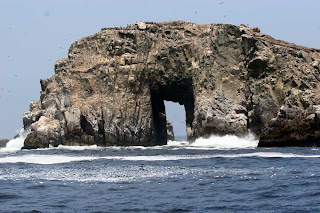 On Nov 30, 2006 we made our last trip.
On Nov 30, 2006 we made our last trip.
Once again, we went out to sea trying to spot cetaceans. It was a fine day with good views. The cloud cover soon broke up and we saw the sun. Passing the guano Palomino island of Island we continue straigth out into the deep ocean.

In a distance we see a huge flock of birds. We decide to approach. There are Peruvian Boobies making kamikaze dives from some 30 meters up, lots of Inca Terns and Sooty Shearwaters, as well as a couple of Pelicans and many Gray Gulls.
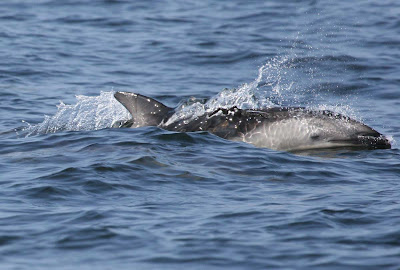
This close-up of Dusky Dolphin shows the caracteristic absence of bottle-shape beak, the contrasting body pattern, and the falcate dorsal fin that is slightly paler towards the trailing edge.
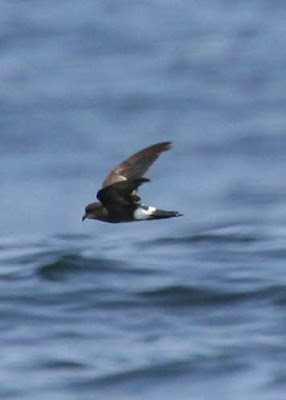
Here is the localized White-vented Storm-Petrel. Other Storm-Petrels seen during the trip were Wedge-rumped and Wilson’s Storm-Petrels.
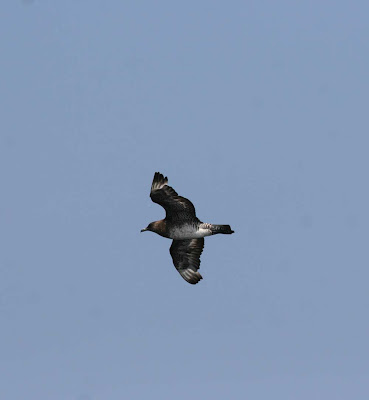
There were many Pomerine Jaegers about. They are the true pirates of the sea, chasing after other birds, bothering them in all ways possible like grabbing their feathers, untill the victim has to give up that recently caught anchoveta.
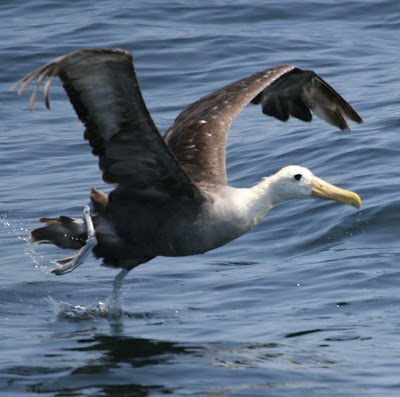
Everyone on board were amazed by the large numbers of Waved Albatross that we were seeing. Well over 30 individuals through-out the day. The Waved Albatross basically only breeds on one island in the Galapagos archipelago. There is a small insignificant numbers on La Plata island off the Ecuadorian coast.
 Española than some 10 years ago. Apparantly adult mortality away from the colony is very high, so that the species should warrent critical threatened status. It seems that bycatch and intentional killing in Northern Peru is the big problem. See the BirdLife Internationals ongoing discussion about this species.
Española than some 10 years ago. Apparantly adult mortality away from the colony is very high, so that the species should warrent critical threatened status. It seems that bycatch and intentional killing in Northern Peru is the big problem. See the BirdLife Internationals ongoing discussion about this species. Back at Isla Palomino we encountered the huge sealion colony. In spite of being in the middle of the day there were surely more than 1000 individuals. In the late afternoon one can see between 5000-8000 sealions here.
Back at Isla Palomino we encountered the huge sealion colony. In spite of being in the middle of the day there were surely more than 1000 individuals. In the late afternoon one can see between 5000-8000 sealions here.Gunnar Engblom
Kolibri Expeditions
Birding Peru with Kolibri Expeditions
More Birds!


